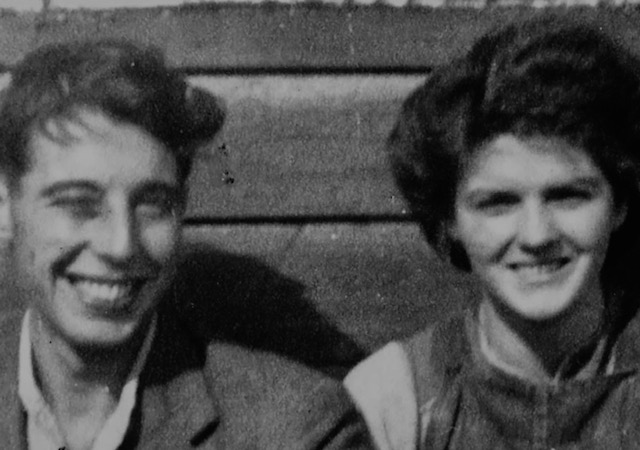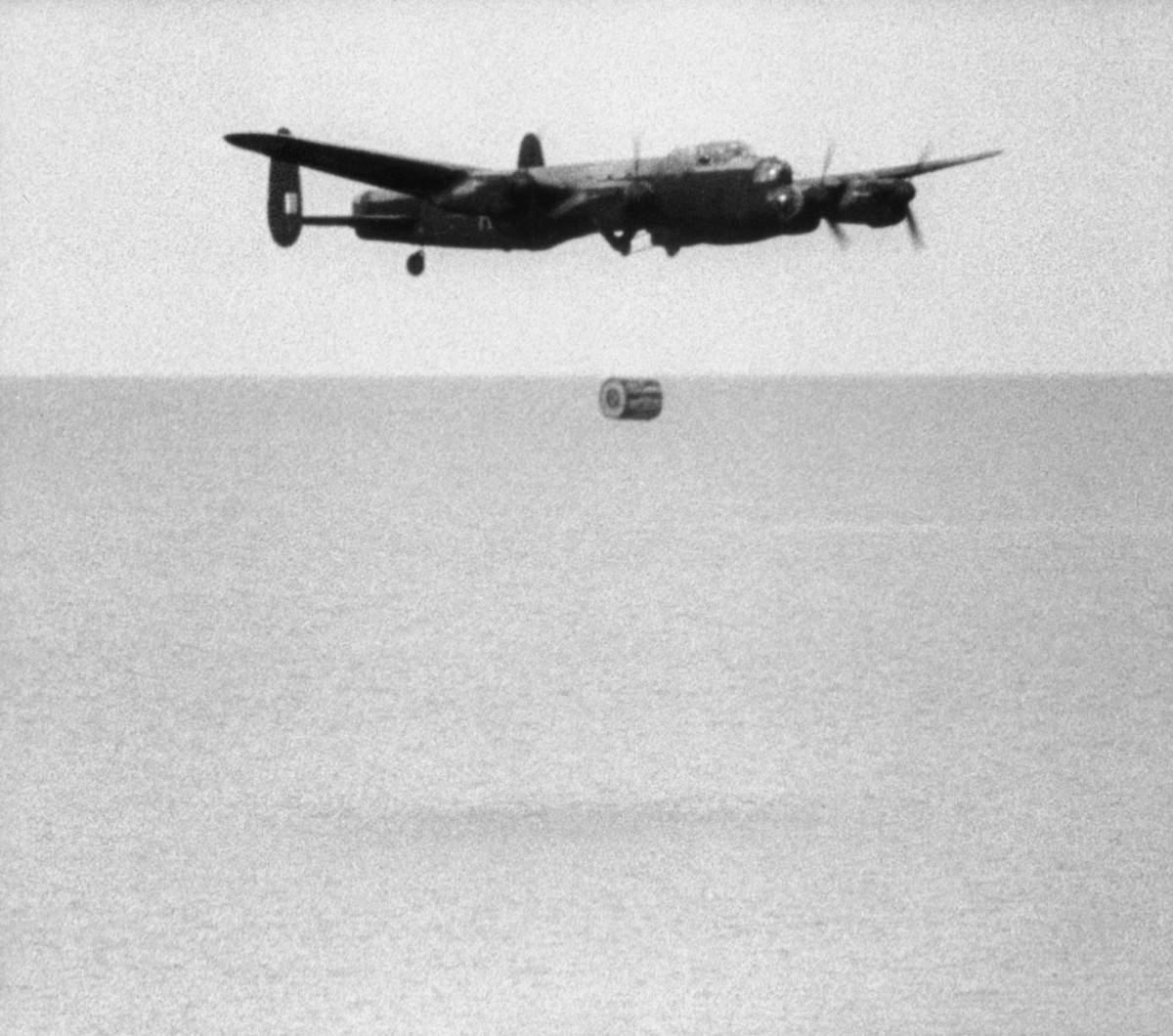Ken Sumner, a Canadian-born veteran of the legendary Dam Busters squadron, who spent almost 200 hours in aircraft fighting Nazi Germany and who was decorated for his devotion to duty, died from the novel coronavirus on April 2.

He was 96 years old.
“He never said much. He was a quiet guy, but when he spoke every single person listened,” said Warwick Shepherd, Sumner’s grandson.
“He was immensely proud and a dogged fighter.”
Sumner died in hospital in the U.K. last week, shortly after being diagnosed with COVID-19.
Shepherd remembers his granddad’s love for his kids or grandkids and his fierce determination.
Shepherd, speaking via Skype from Chester, U.K., told Global News Sumner ran five marathons when he was in his 70s and toured the Great Wall of China in his 80s.
“He didn’t realize it wasn’t a race every day, so he would set off and run ahead of everyone, not thinking it was actually a sightseeing tour.”
Shepherd said Sumner rarely spoke about his war service.
“Like most veterans, he was very humble and very quiet about it.”
Shepherd does know that his granddad was once part of the most celebrated bombing squadron in the Second World War.
Ken Sumner was born in Prairie River, Sask., on May 5, 1923. His own father emigrated to Canada to start a farm after fighting in the First World War, but had to return to England during the Great Depression.
Sumner had originally planned to be a doctor, but he left school when the war began. He enlisted, age 18, in the RAF.
He became a bomb aimer on the famed Avro Lancaster aircraft. It was the aimer’s role to tell the pilot the heading when on a bombing run and when to release the payload.
The aimer also took the ‘bomb photograph,’ which served as proof of the plane’s success.
He joined the No. 44 Rhodesia Squadron, which was named in honour of that British colony’s contribution to the Allied war effort.
The determination, which is grandson recognized even late into Sumner’s life, was on full display during his time in a Lancaster.

Get daily National news
According to a copy of the London Gazette from 1944, Sumner was hit by shrapnel in the hand and arm while en route to a target. He hid the extent of the injury from the pilot because he was afraid the pilot would return to the U.K.
Sumner completed the mission and only told the crew how badly he was hurt when they were once again over British soil.
For his devotion to duty he was awarded the Distinguished Flying Medal.
“The distinguished flying medal, or DFM, was very significant,” Ted Barris, author of ‘Dam Busters: Canadian Airmen and the Secret Raid against Nazi Germany, said.
“If you were a sergeant pilot or a gunner and not as involved in the strategic and tactical aspects of the attack, you might be overlooked,” he explained.
“But to be noticed, to be recognized and to receive the DFM is very important.”
Shortly after the mission on which he was injured, he joined the legendary 617 Squadron, better known as the ‘Dam Busters.’
The Dam Buster raid was a daring attack on the heart of Nazi Germany’s industrial heartland — a series of dams along the Ruhr River.
The plan, officially known as ‘Operation: Chastise,’ sent a squadron of Lancaster bombers — crewed by pilots from all over the Commonwealth — zooming at treetop level through a river valley at full speed so they could literally bounce a specially-designed bomb on the water over torpedo nets and into the dams.
Barris said there wasn’t another raid like it.
“For these crews to come down at 30 metres above the reservoir, and drop this bomb at 375 kilometres an hour, spinning 500 revolutions per minute backwards, with absolutely precise navigational piloting, wireless radio operating, was a miracle,” he said.
Barris noted that Lancasters were designed to bomb from 25- or 30,000 feet (about 7,600 to 9,100m).
“For them to fly 100 feet off the deck where the radar couldn’t see them, essentially — we talk about flying under the radar, this is where the term initiated.”
Two of the dams were destroyed and more were damaged. The loss of hydroelectric power and flooding of military facilities hindered the Nazi war machine.
Barris, speaking over Skype from Uxbridge, Ont., said the success of the raid came at a crucial time for the Allies.
“At that point in the war, at the end of 1942 and early ‘43, morale was at a very low ebb on the Commonwealth side,” he explained.
He pointed to the evacuation at Dunkirk, when the Nazis beat the Allied forces back to the North Channel and off of mainland Europe; the disastrous Dieppe raid, in which more than 900 Allied soldiers perished; and the Pearl Harbour attack as reasons why the prospects of defeating Adolf Hitler seemed so dim.
The Dam Buster raid, says Barris, was a needed victory, but while the attack was a success, he stressed, it wasn’t strategically or tactically critical.
“The dams raid was not a knockout punch — it didn’t deliver the coup de grace to industry in Nazi production of war weaponry,” he said.
“But at a crucial time in the war when there was nothing really to crow about in terms of Allied victories, it was an Allied victory.”
Sumner joined 617 Squadron after the legendary raid and after the Dam Busters nom du guerre was officially bestowed. That meant that any member of the squadron was a Dam Buster.
The 617 continued as a specialist precision bombing unit for the rest of the war and was sent on many more raids with unique bombs.
According to Sumner’s daughter, Lorelle Shepherd, he took part in many high-profile attacks with the Dam Busters, bombing Hamburg and Dresden and using other famous munitions like the ‘Tall Boy’ and ‘Grand Slam’ bombs.
“The Dam Busters, to their credit, not only took out the dams in ’43, but were involved in all the major operations in Bomber Command following that, right to the end of the war,” Barris said.
It was as a Dam Buster in 1944 when Sumner met Phyllis “Rennie” Reynolds, of the Women’s Auxiliary Air Force (WAAF). They married less than two years later and later had three children.
Rennie passed away in 2015.

Shepherd said his granddad was always very proud of his Canadian roots and told Global News that he wanted his connected to the country to be highlighted at his funeral.
“What we’re hoping to do at his funeral next week is drape not only the Union Jack flag over the coffin, which is afforded to veterans,” Shepherd said, “but also the Canadian flag as well, because that’s what he wanted.”
Sumner had wanted half of his ashes spread near Prairie River.
Shepherd said he looked up to his granddad and that his dedication to public service is needed now during the coronavirus pandemic.
Shepherd said a small service will take place next week in order to and a larger one, with all of the military honours due his father, will happen next year after the pandemic ends.










Comments